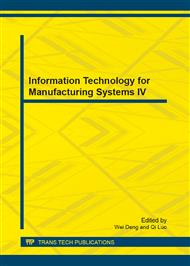[1]
Z.W. Zhong and S.H. Gee: Failure Analysis of Ultrasonic Pitting and Carbon Voids on Magnetic Recording Disks, Ceramics International, Vol. 30 (2004), pp.1619-1622.
DOI: 10.1016/j.ceramint.2003.12.174
Google Scholar
[2]
K. Luo, S. Ha, J. Fretwell, R. Ramos, Z. Ye, G. Schmid, D. LaBrake, D.J. Resnick and S.V. Sreenivasan: Defect Reduction of Patterned Media Templates and Disks, The International Society for Optics and Photonics, Japan, Vol. 7748 (2010).
DOI: 10.1117/12.866882
Google Scholar
[3]
L. Pipes, M. Taylor, G. Zietz, A. Al-Bayati, M. Castle, T. Marin and J. Simmons: Characterization and Reduction of a New Particle Defect Mode in Sub-0. 25 um Semiconductor Process Flows, Nuclear Instruments and Methods in Physics Research, USA, Vol. 237 (July 2005), pp.330-335.
DOI: 10.1016/j.nimb.2005.05.009
Google Scholar
[4]
K. Asawarungsaengkul and S. Sukamta: Process Yield Improvement on the Gram Load Adjusting Process of a Suspension Manufacturer, IEEE International Conference on Quality and Reliability, Bangkok, Thailand, 14 - 17 Septembeer 2011, pp.317-321.
DOI: 10.1109/icqr.2011.6031733
Google Scholar
[5]
J.P.C. Tong, F. Tsung and B.P.C. Yen: A DMAIC Approach to Printed Circuit Board Quality Improvement, Internatioanl Journal of Advance Manufacturing Technology, Vol. 23 (2004), p.523–531.
DOI: 10.1007/s00170-003-1721-z
Google Scholar
[6]
P. Moolla and R. Chompu-inwai: Application of Cleaner Technology and Experimental Design for the Reduction of Chemical Substance Consumption in the Hard Disk Drive Arm Coil Assembly Process, International Conference of Computers and Industrial Engineering (CIE), Awaji, Japan, 25 – 28 July 2010, pp.1-6.
DOI: 10.1109/iccie.2010.5668219
Google Scholar
[7]
W. Wilasri and D. Sutivong: Process Improvement to Reduce Defects from Magnetic Reader Resistance Failure in Hard Disk Drive, International Conference on Computational Intelligence, Modelling and Simulation (CIMSiM), Langkawi, Malaysia, 20-22 September 2011, pp.265-270.
DOI: 10.1109/cimsim.2011.54
Google Scholar
[8]
J.R. Evans and W.M. Lindsay, in: An Introduction to Six Sigma and Process improvement, South-Western College Pub, Thomson South Western, USA (2005).
Google Scholar
[9]
T. Pirker-Krassnig, P.T. James and V. Ribière: Applying Six Sigma to Business Strategy Implementation, BU Academic Review, Vol. 10 (2011), pp.346-355.
Google Scholar
[10]
D.R. Bothe, in: Measuring Process Capability, McGraw Hill, New York (1997).
Google Scholar
[11]
L.W. Bauer: Process Capability Modeling, Inspection and Manufacturing Technologies (2002).
Google Scholar
[12]
J.L. Devore, in: Probability and Statistics for Engineering and Sciences, 8th ed. Brooks/Cole, Boston, MA, USA. (2011).
Google Scholar
[13]
S. Aflaki and M. Memarzadeh: Using Two-Way ANOVA and Hypothesis Test in Evaluating Crumb Rubber Modification (CRM) Agitation Effects on Rheological Properties of Bitumen, Construction and Building Materials, Vol. 25 (2011), pp.2094-2106.
DOI: 10.1016/j.conbuildmat.2010.11.028
Google Scholar
[14]
J.L. Rosenberger: Design of Experiment, The Pennsylvania State University (2012). (Online course).
Google Scholar
[15]
A. Heredia-Langner, E.N. Loredo, D.C. Montgomery and A.H. Gri: Optimization of a Bonded Leads Process using Statistically Designed Experiments, Robotics and Computer Integrated Manufacturing, Vol. 16 (2000), pp.377-382.
DOI: 10.1016/s0736-5845(00)00016-8
Google Scholar
[16]
S. Bisgaard and H.T. Foller: Sample Size Estimate for Two-Level Factorial Experiment with Binary Responses, Center for Quality and Productivity Improvement, Vol. 91 (September 1992).
Google Scholar
[17]
S. Bisgaard and H.T. Foller: Analysis of Factorial Experiment with defect or defectives at the response, Center for Quality and Productivity Improvement, Vol. 119 (June1994).
Google Scholar


